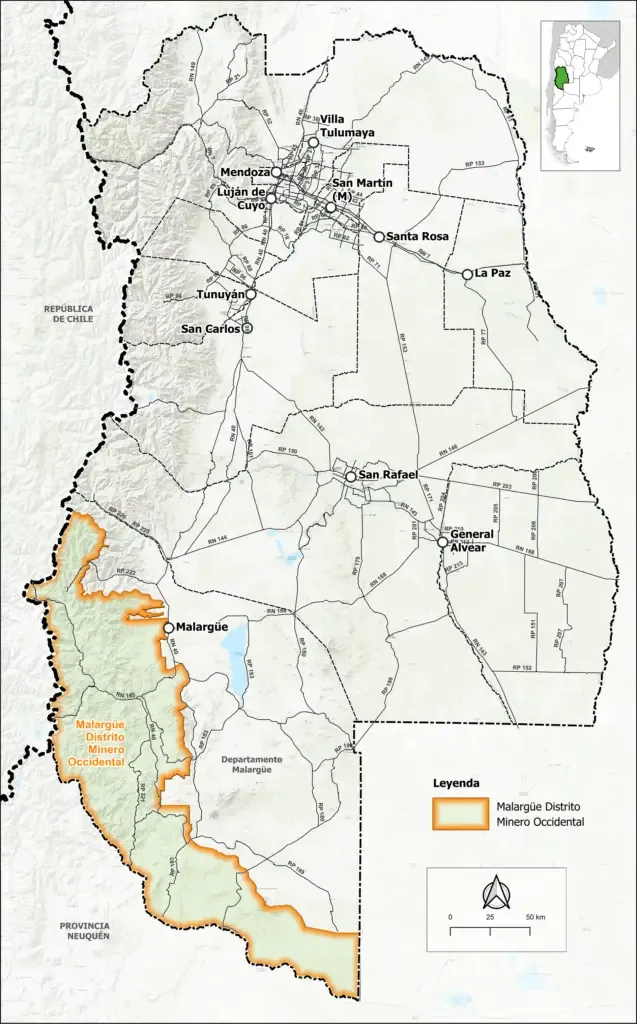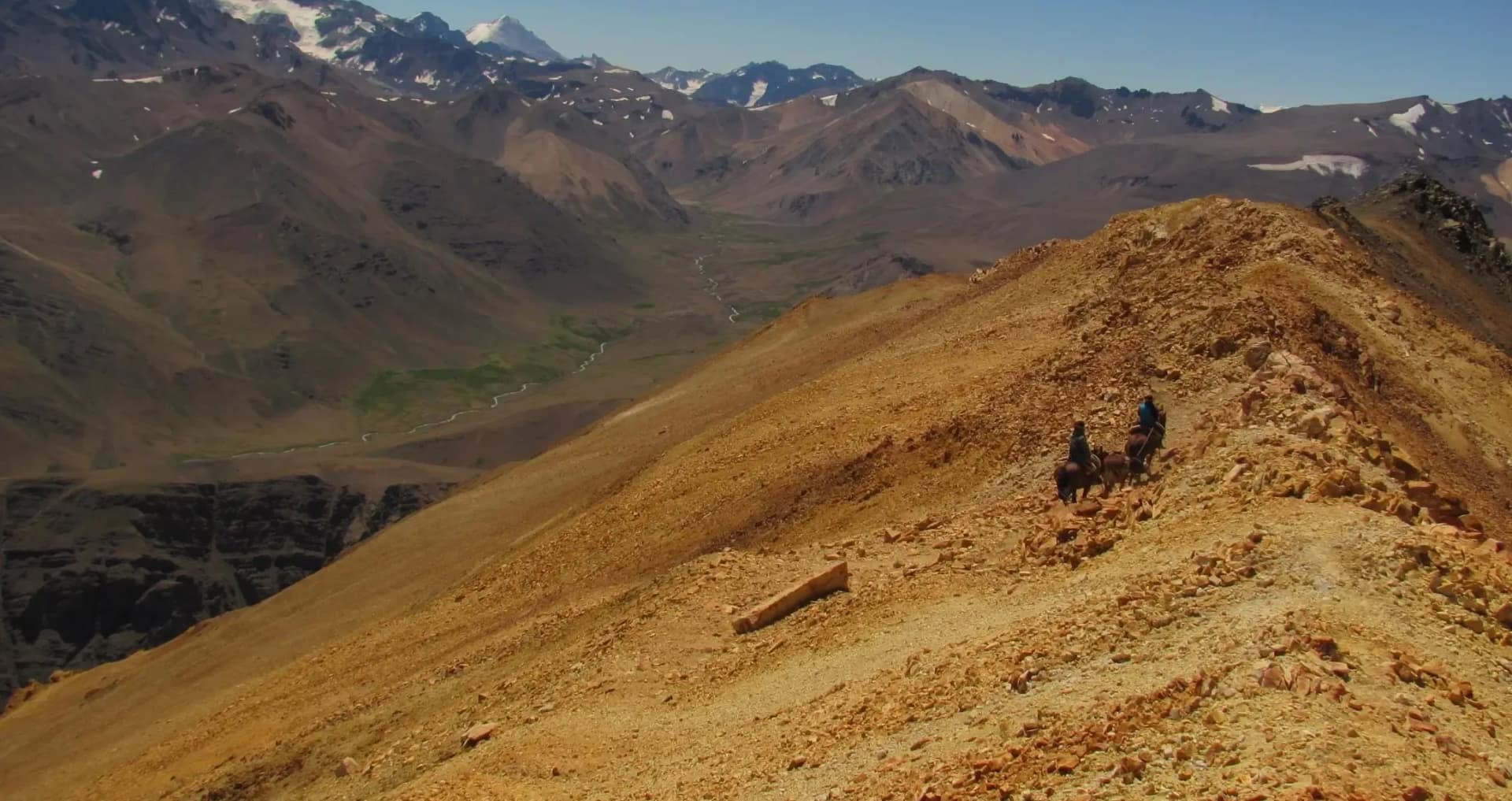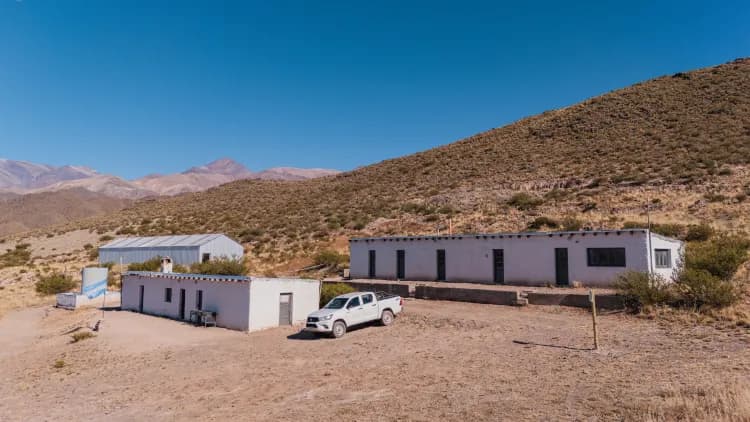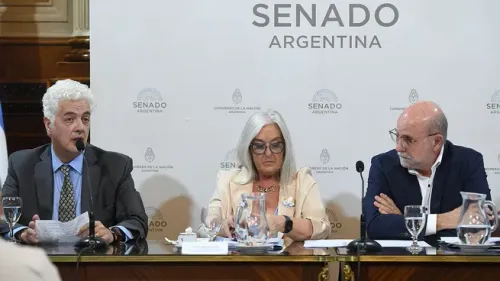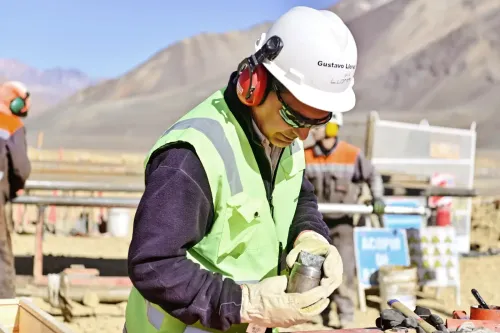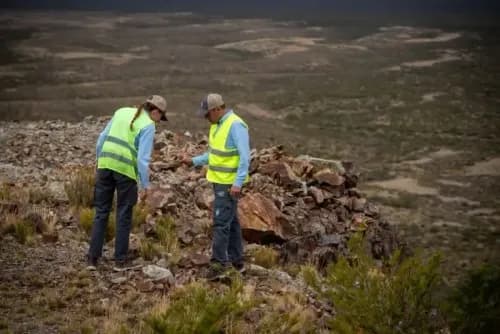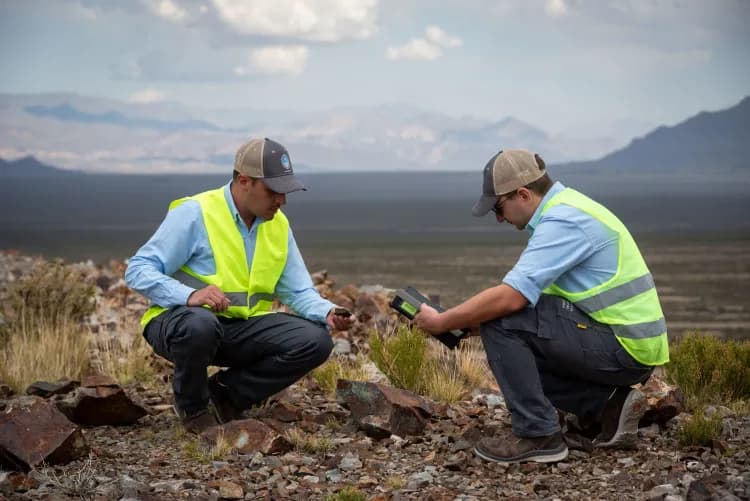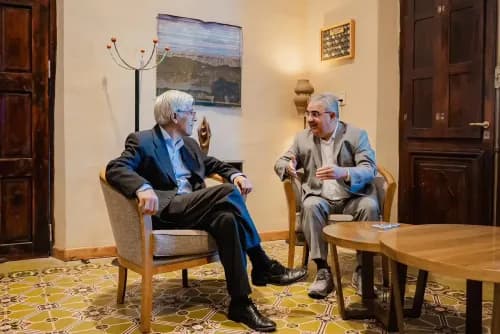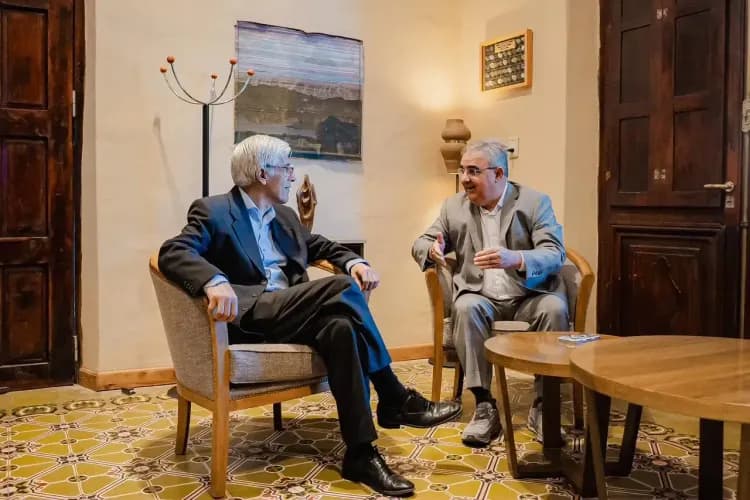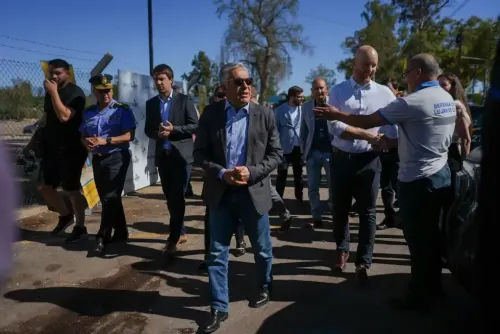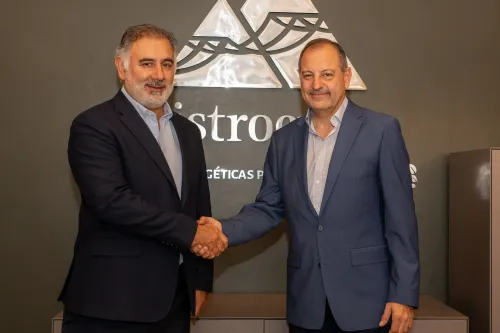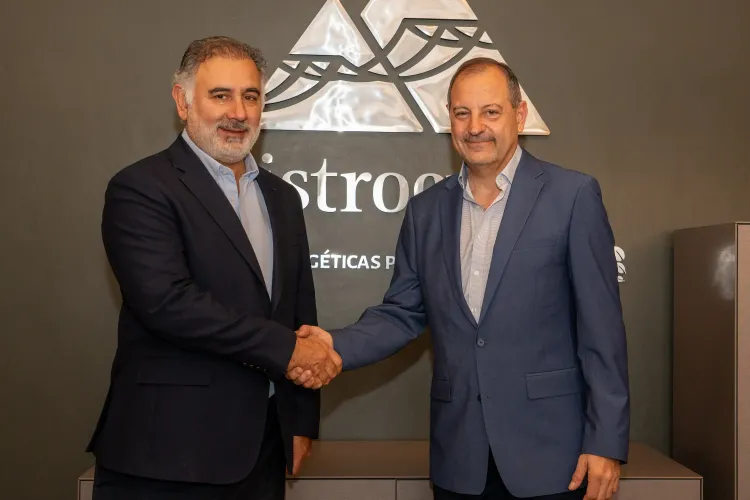With the goal of eliminating all legal restrictions in the 20,000 km² district, the administration is promoting the approval of 27 projects in the Legislature and advancing another 71 cases to boost copper exploration.
By Panorama Minero
Mendoza authorities are determined to fully authorize all projects within the so-called Malargüe Western Mining District (MDMO) in the short term, located in the southernmost part of Mendoza.
The administration of Alfredo Cornejo expects to have all projects under this initiative approved by mid-2026. In the meantime, the Environmental Impact Statement (EIS) for the second stage of the MDMO—comprising 27 projects—has been submitted to the Mendoza Legislature.
This new group of properties reaches the Legislative House seeking approval as required by Law 7,722, exactly one year after the first 34 projects were approved.
The administration’s focus now shifts to securing legislative confirmation of the EIS. Approval of these 27 files would bring the district’s total to 61 initiatives with potential to move into the exploration stage next season—a goal expected to be achieved by late 2025.
Environmental Assessment
The submission of MDMO II was not the only move related to exploration. In parallel, a new file containing 71 additional projects was submitted to the Mining Directorate, marking the start of their environmental impact assessment.
With this third stage, the MDMO would take its final form, as these files include all the remaining properties planned within the designated perimeter.
The goal is that by mid-2026, and looking ahead to the 2026–2027 campaign, the entire district will be available for exploration. In this way, Governor Alfredo Cornejo’s administration aims to achieve a continuous flow of projects, ensuring there are no legal barriers to exploration across the entire area designated for mining development.
This strategy also shifts the initiative for project development to private owners, as Cornejo emphasized during the last Argentina Cobre conference. There, he pointed out that exploration has not progressed at the expected pace in the province. The governor stated: “There are already some exploration projects, though not as many as I expected. I’m throwing the ball back to the private sector—there are no more excuses.”
He added: “The projects are approved, and in the next campaign, it’s time to explore, to drill, to see if there’s copper in the quantity and quality the market needs—which there surely is. So, one less excuse: there’s macroeconomic stability and stable rules of the game.”
In that context, the upcoming exploration campaign the governor referred to is about to begin. On the horizon, the only visible progress is toward drilling at El Perdido, a property managed by the Canadian junior company Kobrea Exploration. The company plans to invest US$5 million in this drilling campaign and has already started building a 15-kilometer access road. The goal is to be ready to begin drilling in December.
The District
The Malargüe Western Mining District (MDMO) is a territorial planning tool developed by the state-owned company Impulsa Mendoza S.A., encompassing a vast area. The district is located in the mountainous region of Malargüe, in southern Mendoza, covering a surface of approximately 20,000 km² (around 1.9 million hectares). The mining properties included within this perimeter account for about 703,000 hectares.
Exploration efforts are focused on the geological potential of the area, particularly in the search for copper porphyries and associated metal-bearing structures. The region displays a geological and tectonic setting highly favorable for this type of deposit.
The exploration stage aims to expand technical knowledge of this extensive territory. Current studies focus on geophysical surveys and surface sampling —methods designed to provide the geological certainty needed to attract junior companies willing to invest the substantial capital required for advanced exploration.
